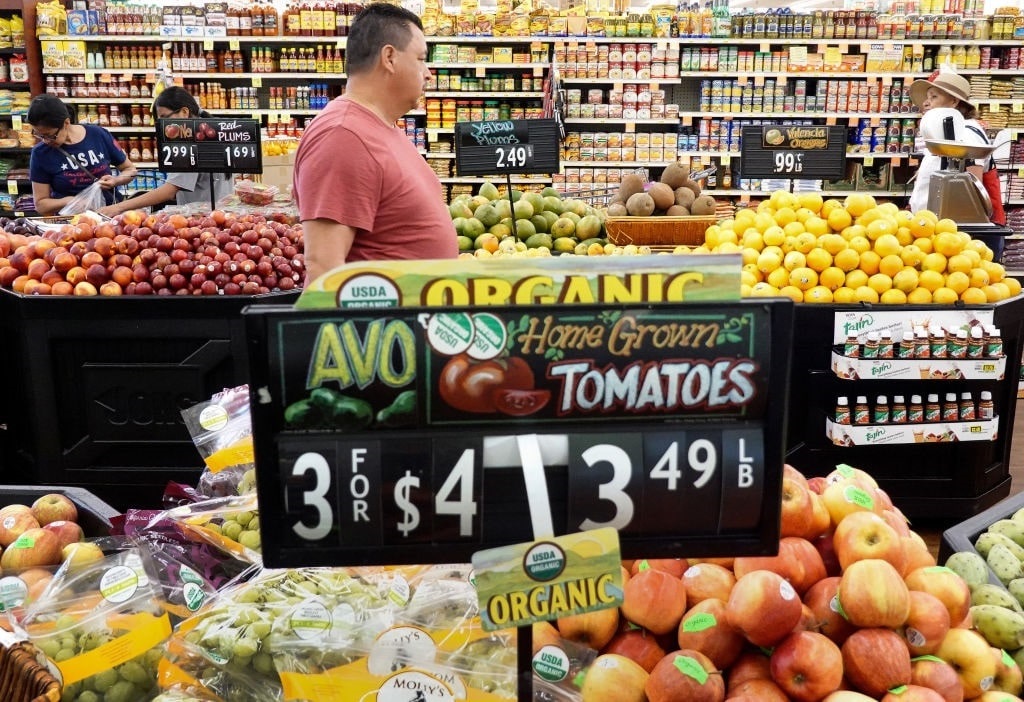Understanding the government’s shell game.
A meme recently raised eyebrows by comparing the cost of groceries purchased for twenty dollars in 1990’s Home Alone movie by child actor Macaulay Culkin with what that basket of goods would cost today. US food inflation has spiked in recent years, exacerbated by the COVID pandemic and substantial federal spending. Despite this, government and media reports claim inflation is cooling sharply and food prices are coming down. Consumers may be forgiven for being skeptical.
Biden’s approval ratings are subterranean, driven in large part by a struggling economy pummeled by record spending. Suddenly, Americans are told that these inflationary pressures are reversing due to Biden’s stellar economic policies. It is to be hoped that inflation is indeed cooling, but Americans’ grocery bills have yet to reflect that optimism.
Inflated Credibility
The government/media alliance that fabricated a Russia-Trump connection and covered up Hunter Biden’s laptop in 2020, might find it has credibility problems telling the public the economy is fine and that there is nothing to see behind that Federal Reserve curtain. Current Biden-exalting economic headlines sound less like news than they do reassuring soundbites courtesy of Karine Jean-Pierre. Reuters reported the rosiest of predictions, claiming recent numbers suggest the economy is “regaining speed after appearing to falter at the start of the fourth quarter.”
“This was yet another data set showcasing the durability of the economic expansion, thanks to a resilient labor market. The economy has defied dire predictions of recession from economists and some business executives going back to late 2022.
“The government reported on Thursday that core PCE inflation increased at a 2.0% annualized rate in the third quarter. That, combined with November’s mild gain, put the six-month core PCE inflation rate at 1.9%.”
Inflation Politics?

(Photo by: Citizen of the Planet/Universal Images Group via Getty Images)
Such wishful thinking may prove short-lived. A frantic effort to bring down fuel and food prices as the 2024 election approaches may woo disillusioned Democrats, but these economic hijinks cannot endure. Indeed, the PCE price index relied upon by Reuters and others excludes fuel and food prices precisely because they are volatile. This has yielded a sort of inflation-gauging shell game, in which the government skews the data to procure sanguine predictions that do not jibe with consumers’ grocery store and gas pump realities. This is the difference between “headline inflation,” which includes these volatile, fundamental household expenditures for food and fuels, and “core inflation,” used artfully (as in the above quote) to pooh-pooh claims that consumers are hurting at the check-out counter.
When partisan forces corrupt the reliability of data, Americans must keep their eyes peeled. There are legitimate uses of core inflation figures, but to ignore food and fuel costs while telling Americans inflation is in the rearview mirror is disingenuous. Core inflation strips out volatile food and energy prices because they can be impacted by international geopolitics (think grain and energy from Russia and Ukraine) and environmental factors (such as drought, or unseasonable deep freezes).
Causes of Food Inflation
The Biden Administration has made geopolitical nation-building and climate change the two centerpieces of its foreign and domestic policies. Both efforts have driven up food and energy prices and will continue to do so. Closing pipelines and new oil exploration increases the cost of fossil fuels used to plow, sow, treat, and harvest hundreds of millions of acres of crops, as well as the costs of equipment, synthetic fertilizers, and transportation. Plastics for packaging and wages for grocery clerks have sharply increased in cost as well.

(Photo by Mario Tama/Getty Images)
These increased overheads are directly connected to Biden’s energy and food policies (targeting cows and promoting synthetic meats also drive up meat prices). Yet these are precisely the costs excluded from the gushing claims that inflation has been conquered, and interest rates will soon start coming down. American consumers lack the luxury of recategorizing their monthly budgets between “core” and “headline” expenditures – they are always going to pay the headline.
Hazy Food Price Projections
That headline is not looking so optimistic. War in Russia continues, along with the food and energy pressures that conflict has inflicted on the world. The Biden administration has not diminished its assault on oil and natural gas resources, either, reducing supplies and driving up prices. The USDA notes: “In 2022, food prices increased by 9.9 percent. Food-at-home prices increased by 11.4 percent, while food-away-from-home prices increased by 7.7 percent.” Despite claims of lower “core” inflation, the USDA predicts food prices will not decline in 2024:
“USDA economists said in the forecast that food prices are expected to continue to decelerate but not decline in 2024. In 2024, all food prices are predicted to increase 2.9% in 2024, with a prediction interval of -0.9% to 6.8%.”
These food numbers, too, should be ingested with a large serving of salt. The “basket of goods” employed to calculate such predictions is subject to abuse. Just as Macaulay Culkin’s fictitious purchase in 1990 of Tide detergent, a gallon of milk, and a package of toy soldiers may not accurately mirror what most Americans drop into their carts, the USDA’s measures may bypass volatile products that are favorites at the dinner table. Eggs have skyrocketed; live beef prices have dropped slightly but are expected to rise substantially in 2024, as is chicken. Sugar, coffee, and soybeans are expected to drop in 2024 – but what of seafood, poultry, pork, and cheese?
The Future Food Inflation Climate
Food prices are difficult to accurately predict due to many variables impacting costs and supplies. American consumers would do well to stock up despite rose-colored predictions about core inflation. Joe Biden’s agenda-drive policies – especially geopolitics, and “rescuing” the climate by tamping down oil in favor of coal-fired solar panel manufacturing – will continue to disproportionately impact headline inflation. Core inflation is the number trumpeted by propagandists to sway voters; Headline inflation is the number that meets the consumer at the pay counter.
There are no signs that food inflation – or the Biden policies that continue to pressure food prices upwards – will broadly decline any time soon.

